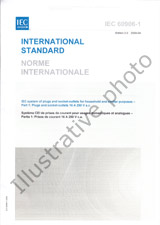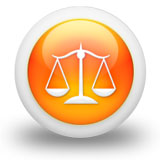We need your consent to use the individual data so that you can see information about your interests, among other things. Click "OK" to give your consent.

IEC/TS 60079-32-1-ed.1.1+Amd.1-CSV
Explosive atmospheres - Part 32-1: Electrostatic hazards - guidance
Translate name
STANDARD published on 16.3.2017
The information about the standard:
Designation standards: IEC/TS 60079-32-1-ed.1.1+Amd.1-CSV
Publication date standards: 16.3.2017
SKU: NS-1092011
The number of pages: 354
Approximate weight : 1093 g (2.41 lbs)
Country: International technical standard
Category: Technical standards IEC
The category - similar standards:
Annotation of standard text IEC/TS 60079-32-1-ed.1.1+Amd.1-CSV :
IEC TS 60079-32-1:2013+A1:2017 gives guidance about the equipment, product and process properties necessary to avoid ignition and electrostatic shock hazards arising from static electricity as well as the operational requirements needed to ensure safe use of the equipment, product or process. It can be used in a risk assessment of electrostatic hazards or for the preparation of product family or dedicated product standards for electrical or non-electrical machines or equipment. The purpose of this document is to provide standard recommendations for the control of static electricity, such as earthing of conductors, reduction of charging and restriction of chargeable areas of insulators. In some cases static electricity plays an integral part of a process, e.g. electrostatic coating, but often it is an unwelcome side effect and it is with the latter that this guidance is concerned. If the standard recommendations given in this document are fulfilled it can be expected that the risk of hazardous electrostatic discharges in an explosive atmosphere is at an acceptably low level. This consolidated version of the official IEC Standard and its amendment consists of the first edition (2013) and its amendment 1 (2017). Therefore, no need to order amendment in addition to this publication. Keywords: risk assessment of electrostatic hazards, static electricity IEC TS 60079-32-1:2013+A1:2017 fournit les recommandations relatives au materiel, au produit et aux proprietes de processus necessaires pour eviter linflammation et les dangers de chocs electrostatiques lies a lelectricite statique, ainsi que les exigences de fonctionnement necessaires pour garantir lutilisation en toute securite du materiel, du produit ou du processus. Elle peut etre utilisee dans le cadre dune appreciation du risque des dangers electrostatiques ou de lelaboration de normes de famille de produits ou de normes de produits specifiques concernant des machines ou des equipements electriques ou non electriques. Lobjet du present document est de fournir des recommandations normalisees pour le controle de lelectricite statique, telles que la mise a la terre des conducteurs, la reduction de lelectrisation et la restriction des zones electrisables des isolateurs. Dans certains cas, lelectricite statique fait partie integrante dun processus (revetement electrostatique, par exemple), mais elle saccompagne souvent dun effet secondaire genant, ce sur quoi portent les presentes recommandations. Si les recommandations normalisees indiquees dans le present document sont respectees, le risque de decharges electrostatiques dangereuses attendues dans une atmosphere explosive peut etre a un niveau bas acceptable. Cette version consolidee comprend la premiere edition (2013) et son amendement 1 (2017). Il nest donc pas necessaire de commander lamendement avec cette publication.
We recommend:
Updating of laws
Do you want to be sure about the validity of used regulations?
We offer you a solution so that you could use valid and updated legislative regulations.
Would you like to get more information? Look at this page.



 Cookies
Cookies
